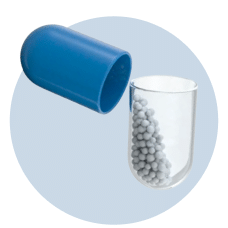- Sexual Wellness
- Condoms
- Lubricants & Massage Gels
- Personal body massagers
- Men Performance Enhancers
- Sexual Health Supplements
- Skin Care
- Mosquito Repellents
- Acne Care
- Bath Essentials
- Facewash
- Sanitizers & Handwash
- Sunscreen Products
- Baby Care
- Baby & Infant Food
- Baby Diapers, wipes & more
- Nursing & Feeding
- Baby Bath Essentials
- Baby Skin Care
- Baby Healthcare
- Baby Oral Health
- Hair Care
- Shampoo
- Hair Conditioners
- Hair Growth Supplements
- Hair Oils
- Hair Growth for Men
- Vitamins & Supplements
- Multivitamins
- Mineral Supplements
- Vitamins A-Z
- banner
- Nutritional Drinks
- Adult Daily Nutrition
- Kids Nutrition (2-15 Yrs)
- For Women
- Health Food & Drinks
- Green Tea & Herbal Tea
- Herbal Juice
- Apple Cider Vinegar
- Healthy Snacks
- Masks (N95, Surgical and more)
- Face Shield
- Surgical Masks
- N95 Masks
- N99 Masks
- BP Monitors
- Nebulizers & Vaporizers
- Oximeters & Pedometers
- Vital Signs Monitors & Wearables
- Oxygen Concentrators & Cans
- Weighing Scales
- Thermometers
- IR Thermometers
- Body Massager
- Diabetes Monitors
- Mobility Equipments
- Exercise Equipments
- Doctor's Corner
- Stethoscopes
- Tapes & Bandages
- Clinical Diagnostic Equipments
- Dressings & Wound Care
- Supports & Braces
- Neck & Shoulder Support
- Knee & Leg Support
- Back & Abdomen Support
- Ankle & Foot Support
- Hand & Wrist Braces
- Arm & Elbow Support
- Cervical Pillows
- Compression support & sleeves
- Heel support
- Ayurveda Top Brands
- Dabur
- Sri Sri Tattva
- Baidyanath Products
- Kerala Ayurveda
- Jiva Ayurveda
- Zandu
- Tata 1mg Herbal Supplements
- Patanjali
- Herbs
- Turmeric
- Ashwagandha (Immunity & Stress)
- Garcinia Cambogia (Weight Loss)
- Arjuna (Cardiac Wellness)
- Shilajit (Men Sexual Wellness)
- Ginseng (Improves Cognition)
- Milk Thistle (Liver Care)
- Musli (Vitality & Sexual Wellness)
- Saw Palmetto (Prostate Health)
- Evening Primrose
Cinort 0.1% Ointment
Prescription Required
Product introduction
Cinort 0.1% Ointment is a type of medicine known as a topical steroid. It is used to treat certain skin conditions such as eczema, dermatitis, and rash. It helps reduce symptoms like swelling, itching, and redness.
Many modern health problems involve inflammation. When the immune system goes into action, inflammation can get out of control and cause damage or pain. Cinort 0.1% Ointment is a chemical that can stop inflammation
Many modern health problems involve inflammation. When the immune system goes into action, inflammation can get out of control and cause damage or pain. Cinort 0.1% Ointment is a chemical that can stop inflammation
Uses of Cinort Ointment
- Skin conditions with inflammation & itching
- Treatment of Rheumatoid arthritis
- Treatment of Osteoarthritis
Benefits of Cinort Ointment
In Skin conditions with inflammation & itching
Cinort 0.1% Ointment is effective in treating skin conditions with inflammation and itching like eczema, dermatitis, or rash. It works by reducing the actions of chemicals in the body that cause inflammation of the skin. When used correctly it is a safe and effective treatment. It reduces the redness, rash, pain or itchiness caused by your skin’s reaction to an irritant. It thus improves your self-esteem and confidence as your appearance changes.
You should always use it as prescribed and only apply the amount you have been told to. Keep using it for as long as it is prescribed to get the full benefits.
You should always use it as prescribed and only apply the amount you have been told to. Keep using it for as long as it is prescribed to get the full benefits.
In Treatment of Rheumatoid arthritis
Rheumatoid arthritis or RA is an autoimmune disorder, in which the immune system starts attacking the lining of your joints. This causes pain and swelling in the joints.
Cinort 0.1% Ointment helps treat rheumatoid arthritis. It makes the immune system function normally and prevents it from attacking the body. This gives relief from the symptoms such as pain, swelling, and stiffness in the joints. This helps in easy movement and makes you do your daily activities more easily.
Cinort 0.1% Ointment helps treat rheumatoid arthritis. It makes the immune system function normally and prevents it from attacking the body. This gives relief from the symptoms such as pain, swelling, and stiffness in the joints. This helps in easy movement and makes you do your daily activities more easily.
In Treatment of Osteoarthritis
Osteoarthritis is a condition that causes pain and swelling in the joints.
Cinort 0.1% Ointment can give you relief from this pain and swelling. It also reduces stiffness in the joints and helps in easy movement. This will help you do your daily activities more easily and thus improve your quality of life. Cinort 0.1% Ointment should be taken at the same time each day to get maximum benefits. You should continue taking it until your doctor asks you to stop. Mild symptoms of osteoarthritis can sometimes be managed by doing light exercises, losing weight, and wearing suitable footwear.
Cinort 0.1% Ointment can give you relief from this pain and swelling. It also reduces stiffness in the joints and helps in easy movement. This will help you do your daily activities more easily and thus improve your quality of life. Cinort 0.1% Ointment should be taken at the same time each day to get maximum benefits. You should continue taking it until your doctor asks you to stop. Mild symptoms of osteoarthritis can sometimes be managed by doing light exercises, losing weight, and wearing suitable footwear.
Side effects of Cinort Ointment
Most side effects do not require any medical attention and disappear as your body adjusts to the medicine. Consult your doctor if they persist or if you’re worried about them
Common side effects of Cinort
- Bacterial infection
- Skin discoloration
- Contact dermatitis
- Increased risk of infection
- Headache
- Joint pain
- Injection site reactions (pain, swelling, redness)
How to use Cinort Ointment
This medicine is for external use only. Use it in the dose and duration as advised by your doctor. Check the label for directions before use. Clean and dry the affected area and gently massage the ointment.
How Cinort Ointment works
Cinort 0.1% Ointment is a steroid. It works by blocking the production of certain chemical messengers (prostaglandins) that make the skin red, swollen, and itchy.
Safety advice
Alcohol
No interaction found/established
Pregnancy
CONSULT YOUR DOCTOR
Cinort 0.1% Ointment may be unsafe to use during pregnancy. Although there are limited studies in humans, animal studies have shown harmful effects on the developing baby. Your doctor will weigh the benefits and any potential risks before prescribing it to you. Please consult your doctor.
Breast feeding
SAFE IF PRESCRIBED
Cinort 0.1% Ointment is probably safe to use during breastfeeding. Limited human data suggests that the drug does not represent any significant risk to the baby.
Driving
No interaction found/established
Kidney
No interaction found/established
Liver
No interaction found/established
What if you forget to take Cinort Ointment?
If you miss a dose of Cinort 0.1% Ointment, apply it as soon as possible. However, if it is almost time for your next dose, skip the missed dose and go back to your regular schedule. Do not double the dose.
All substitutes
For informational purposes only. Consult a doctor before taking any medicines.
Cinort 0.1% Ointment
₹3.6/gm of Ointment
Triamaderm Ointment
NuLife Pharmaceuticals
₹5.4/gm of ointment
64% costlier
Triora Ointment
Unimarck Healthcare Ltd
₹5.5/gm of ointment
67% costlier
Triamaderm Ointment
NuLife Pharmaceuticals
₹4.11/gm of ointment
25% costlier
Triamacort 0.1% Ointment
Lincoln Pharmaceuticals Ltd
₹5.4/gm of ointment
64% costlier
Ledercort 0.1% Ointment
Pfizer Ltd
₹3.19/gm of ointment
3% cheaper
Quick tips
- Cinort 0.1% Ointment is used to treat the redness, swelling, itching, and discomfort of various skin conditions.
- It should be applied to the affected areas as a thin film two or three times daily, or as advised by your doctor.
- Don't use it more often or for longer than advised by your doctor.
- Don't cover the area being treated with airtight dressings such as bandages unless directed by a doctor, as this may increase the risk of side effects.
- If you think the area of skin you are treating has become infected you should stop using Cinort 0.1% Ointment and consult your doctor.
- Consult your doctor if your skin condition has not improved after 2 weeks of treatment.
Fact Box
Chemical Class
Glucocorticoids
Habit Forming
No
Therapeutic Class
DERMA
Action Class
Glucocorticoids
Patient concerns
FAQs
What is Cinort 0.1% Ointment? What is it used for?
Cinort 0.1% Ointment belongs to a group of medicines called steroids, also known as corticosteroids. Cinort 0.1% Ointment is used to treat various allergic skin conditions such as eczema and atopic dermatitis. Cinort 0.1% Ointment effectively reduces symptoms such as swelling, itching, and redness associated with such conditions.
How does Cinort 0.1% Ointment work?
Cinort 0.1% Ointment works by decreasing the inflammation caused by allergies. It reduces inflammation by blocking the release of certain natural substances that cause allergic symptoms such as swelling, redness, and pain.
How long does Cinort 0.1% Ointment take to start working?
The time required by Cinort 0.1% Ointment to start showing its effects may differ from person to person. Usually, it starts showing relief within 8 hours of starting Cinort 0.1% Ointment. It may even take several days before you see maximum benefits. To improve your symptoms faster, it is important to take the medicine regularly to gain maximum benefit from the medicine.
Is Cinort 0.1% Ointment good for burns?
No, Cinort 0.1% Ointment should never be applied in those areas of the skin that have burns, cuts, or scrapes. If Cinort 0.1% Ointment accidentally gets onto such areas, rinse the area thoroughly with water. You should use this medicine only as directed by your doctor to avoid any adverse effects and worsening of your condition.
How to use Cinort 0.1% Ointment?
Before using Cinort 0.1% Ointment, clean and dry the affected area. Gently and thoroughly massage it into the skin. Be careful not to get the medication in your eyes or mouth. If Cinort 0.1% Ointment gets in your eyes accidentally, wash with plenty of water and call your doctor if your eyes are irritated.
What precautions do I need to take while using Cinort 0.1% Ointment?
Be careful not to get Cinort 0.1% Ointment into your eyes or mouth. If you happen to get it in your eyes, rinse off with plenty of water immediately and contact your doctor. You must not use Cinort 0.1% Ointment if you are allergic to it or any of its ingredients. Tell your doctor if you notice any allergic reaction while using it for the first time. Inform your doctor if you are taking any medicines regularly to prevent any allergic reaction with other medicines. Do not cover the area being treated with Cinort 0.1% Ointment with a bandage, as this may increase absorption of this medicine and increase the side effects. Do not use more than what is recommended to relieve your symptoms faster. Using more than what is advised will only increase the side effects. Also, let your doctor know if you are planning to conceive to avoid any harm to the baby. Pregnant and breastfeeding mothers should use Cinort 0.1% Ointment only if prescribed by the doctor.
Related ayurvedic ingredients
Disclaimer:
Tata 1mg's sole intention is to ensure that its consumers get information that is expert-reviewed, accurate and trustworthy. However, the information contained herein should NOT be used as a substitute for the advice of a qualified physician. The information provided here is for informational purposes only. This may not cover everything about particular health conditions, lab tests, medicines, all possible side effects, drug interactions, warnings, alerts, etc. Please consult your doctor and discuss all your queries related to any disease or medicine. We intend to support, not replace, the doctor-patient relationship.References
- Briggs GG, Freeman RK, editors. A Reference Guide to Fetal and Neonatal Risk: Drugs in Pregnancy and Lactation. 10th ed. Philadelphia, PA: Wolters Kluwer Health; 2015. pp. 1398-400.
Marketer details
Name: Apple Therapeutics Pvt Ltd
Address: 608, Siddhartha Building- 96, Nehru Place, New Delhi-110019
Country of origin: India
The list of available options shown with the same composition has been prepared upon the advice of registered medical practitioners, pharmacists affiliated with TATA 1MG. TATA 1MG does not promote any pharmaceutical product of any particular company, and all recommendations are based on the medical opinion, advisories from specialist medical and pharmaceutical professionals.
The list of available options shown with the same composition has been prepared upon the advice of registered medical practitioners, pharmacists affiliated with TATA 1MG. TATA 1MG does not promote any pharmaceutical product of any particular company, and all recommendations are based on the medical opinion, advisories from specialist medical and pharmaceutical professionals.
Lab tests offered by us

Related/Popular tests
MRP
₹72
Inclusive of all taxes
20.0 gm in 1 tube
SOLD OUT
Available options
Available options
Same salt composition:Triamcinolone (0.1% w/w)

Same salt composition

Verified by doctors

Popularly bought

Trusted quality
Why buy these from 1mg?










